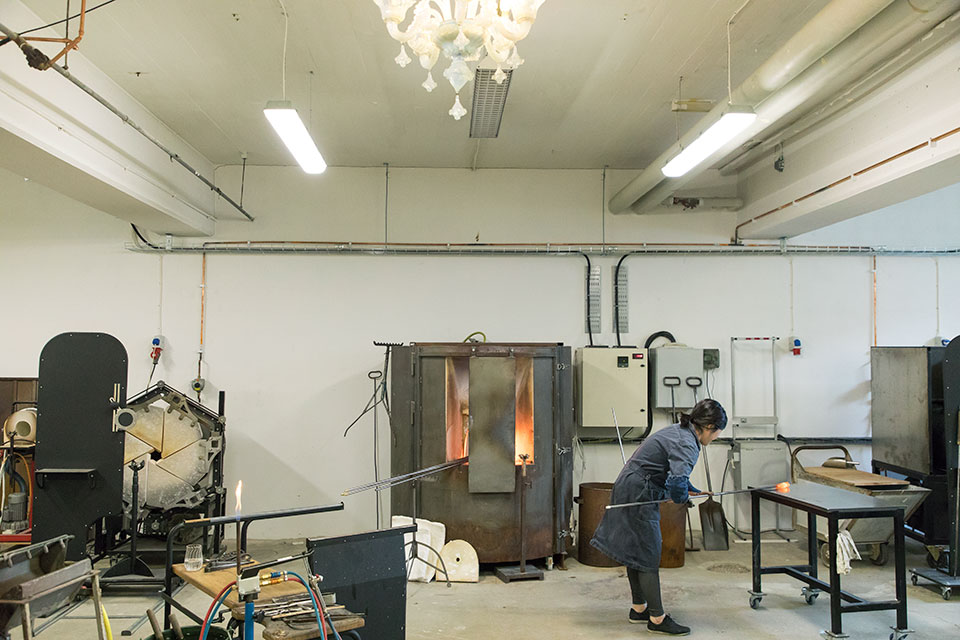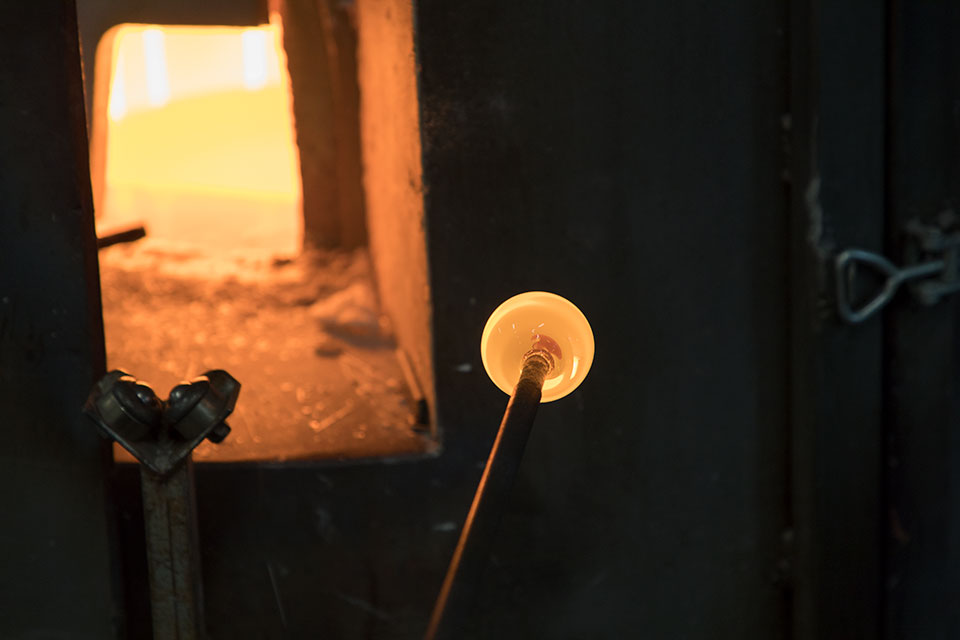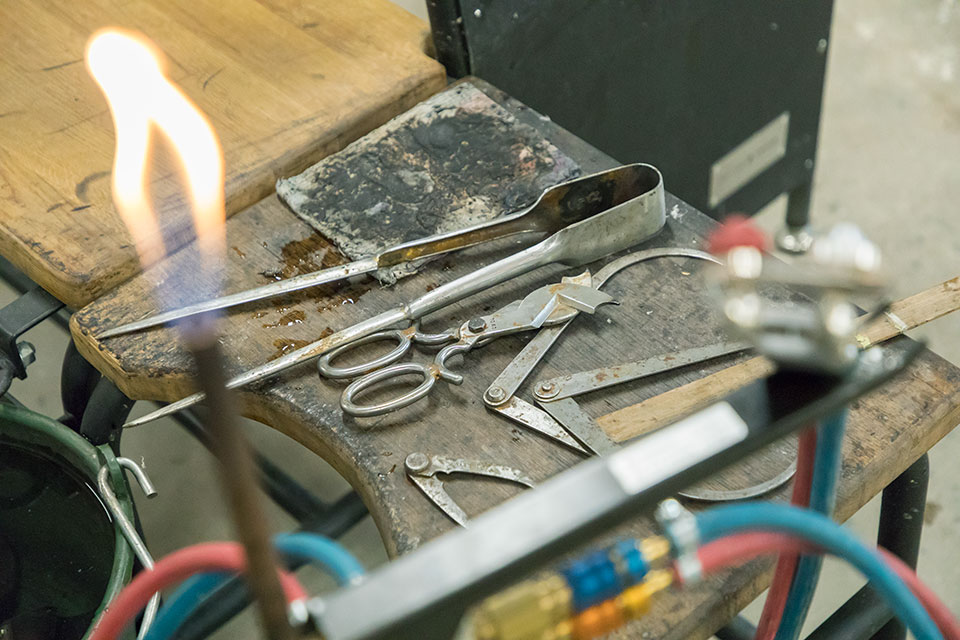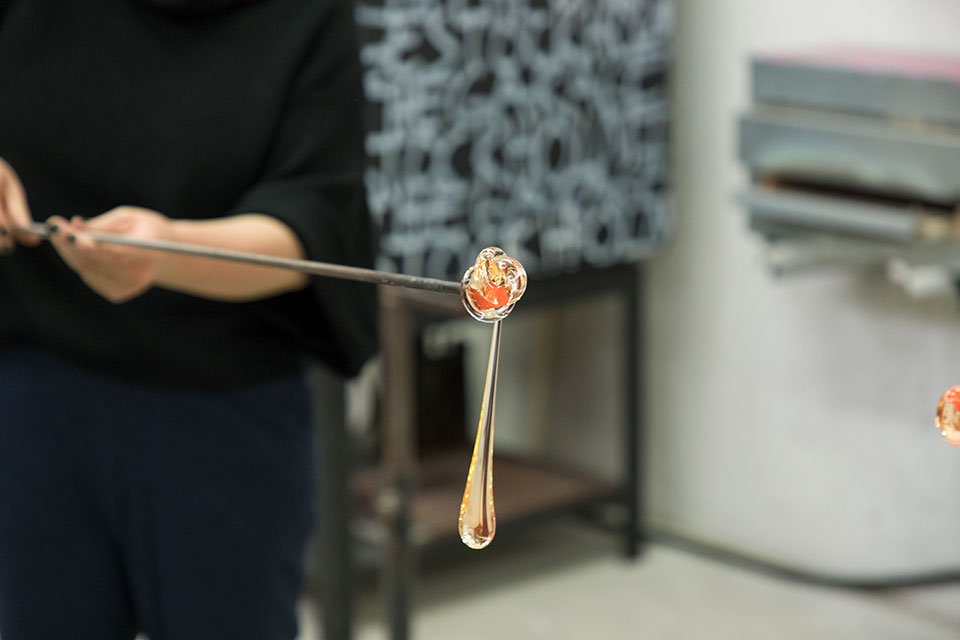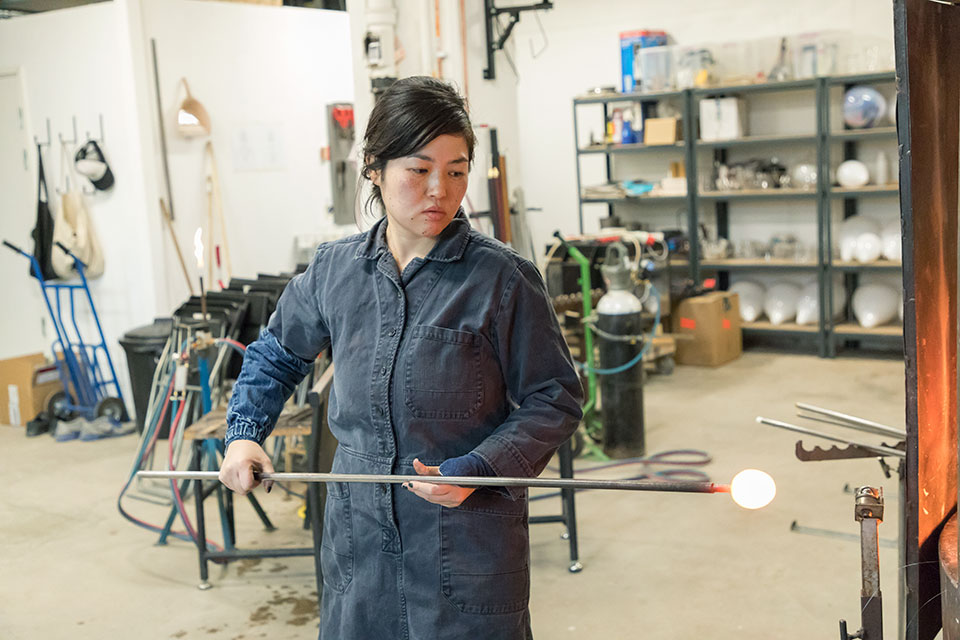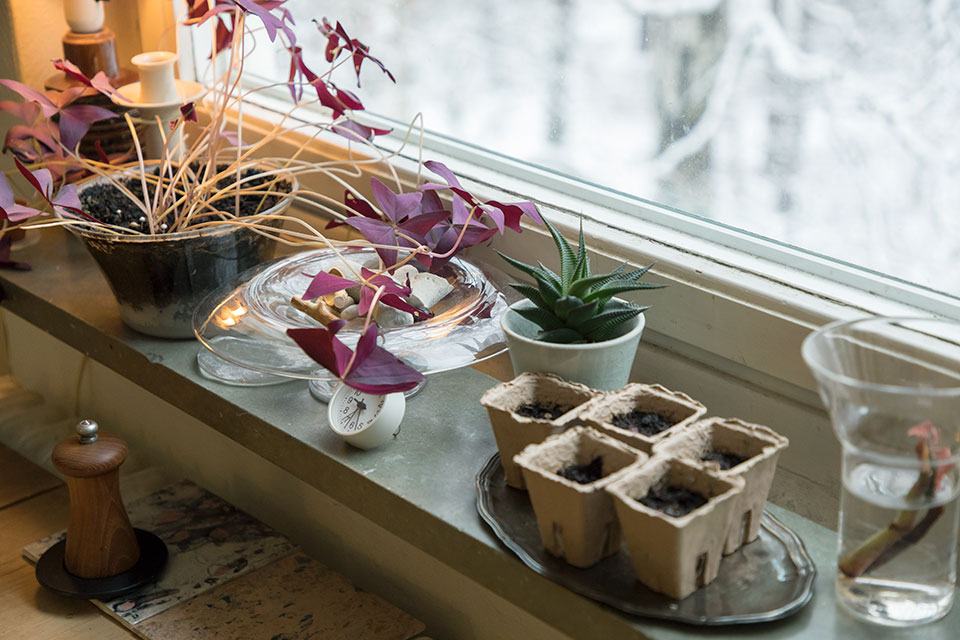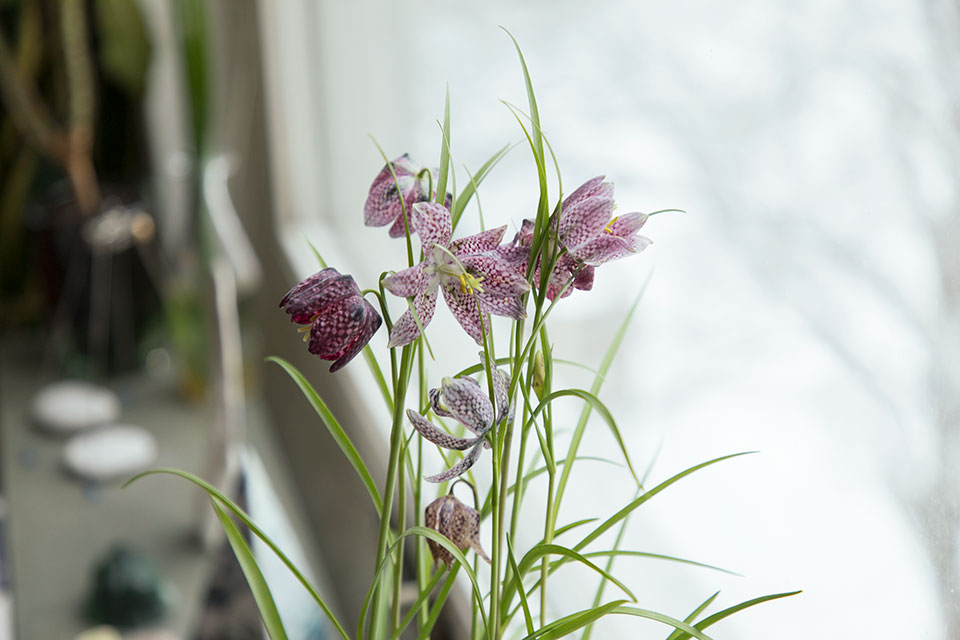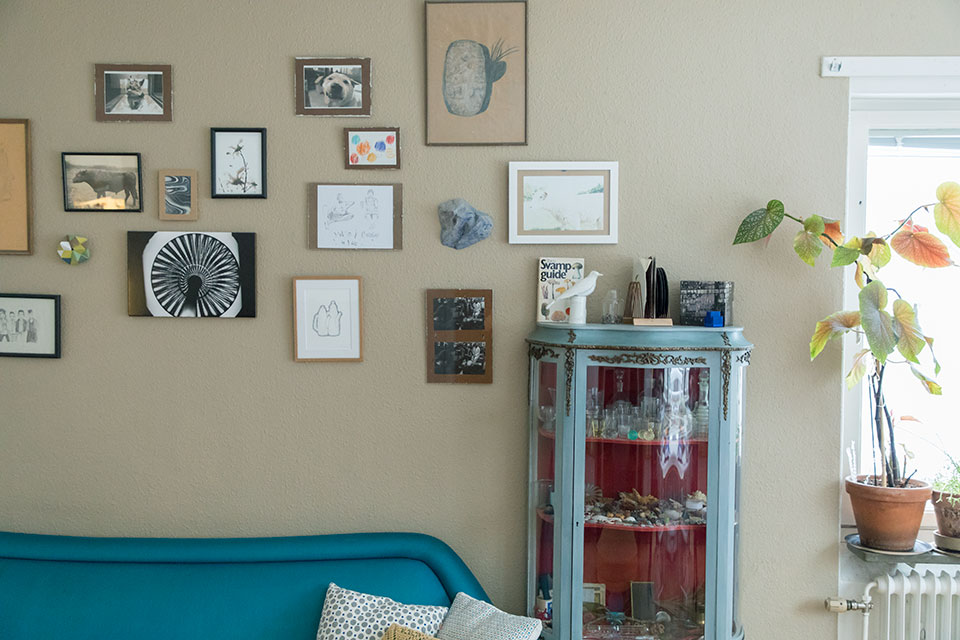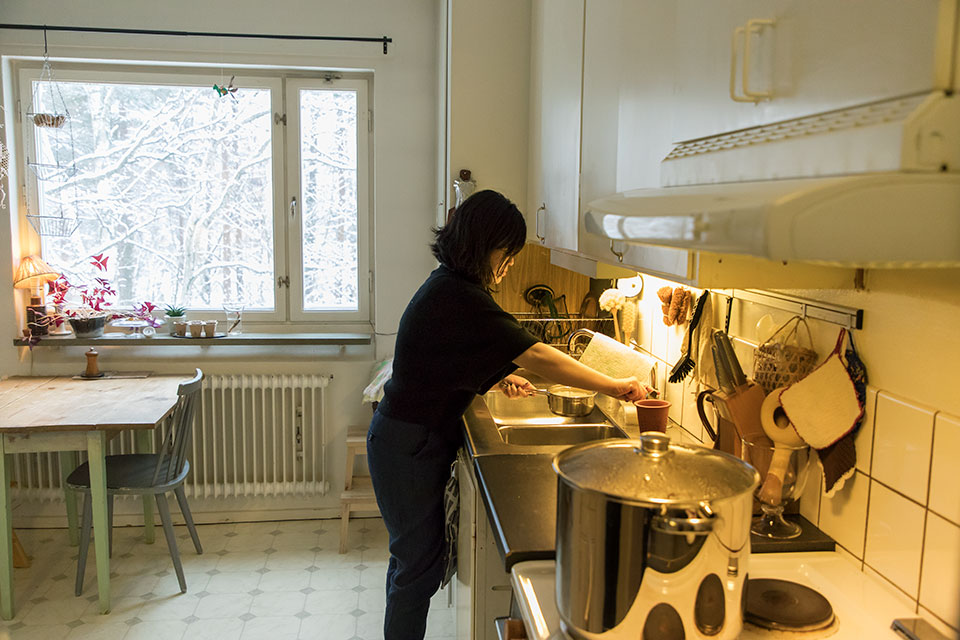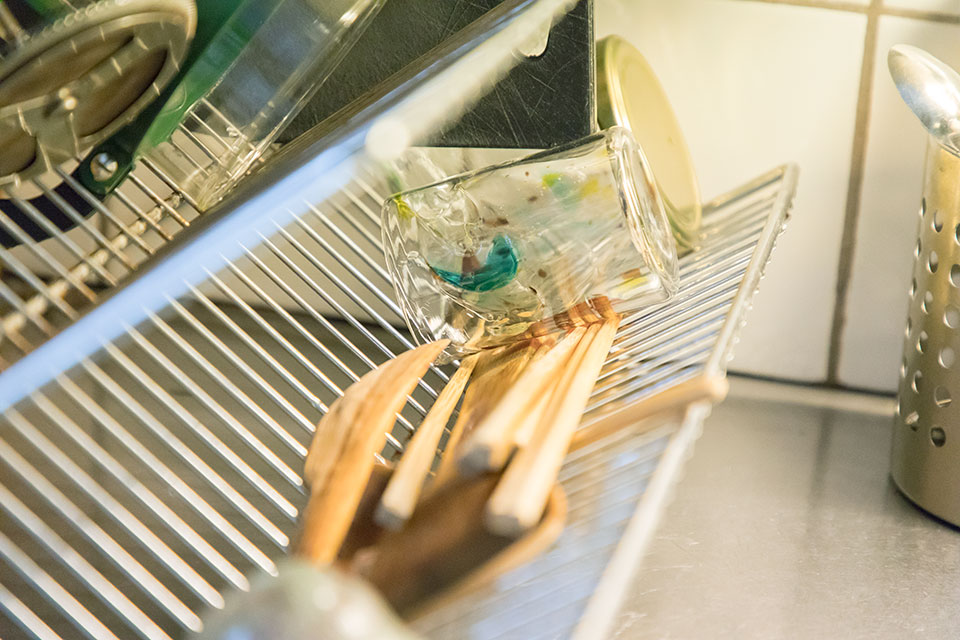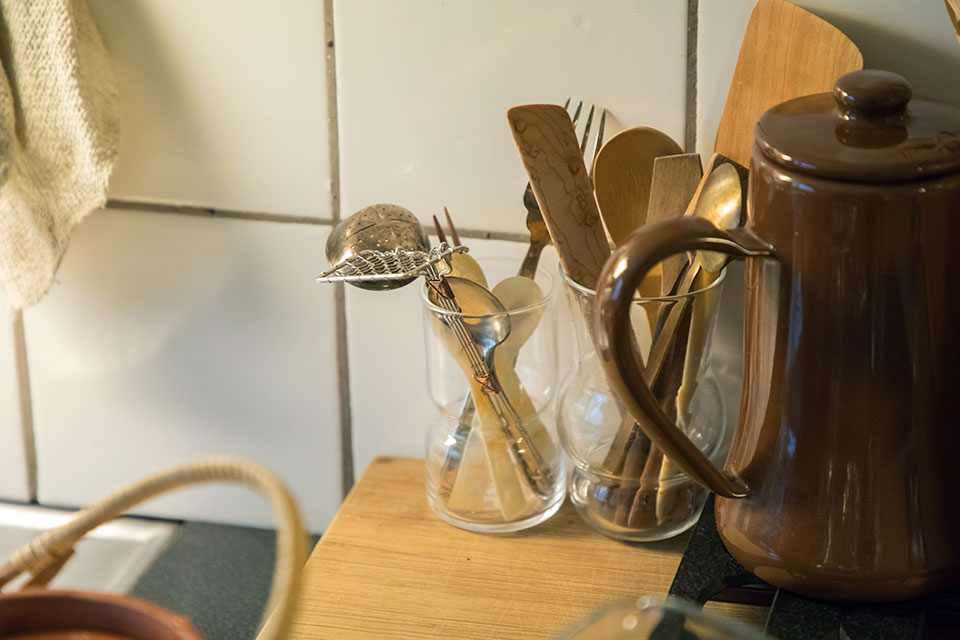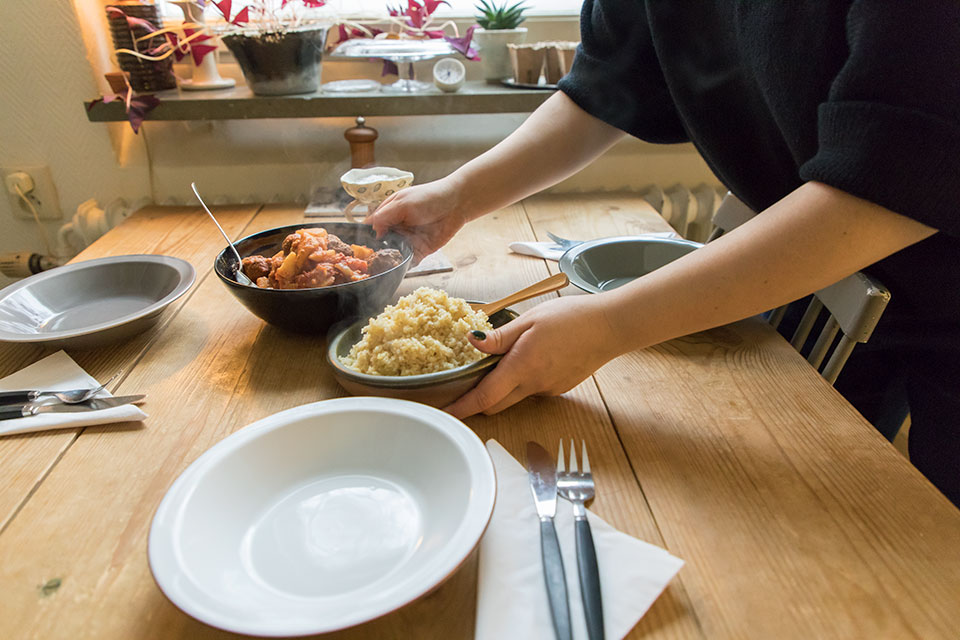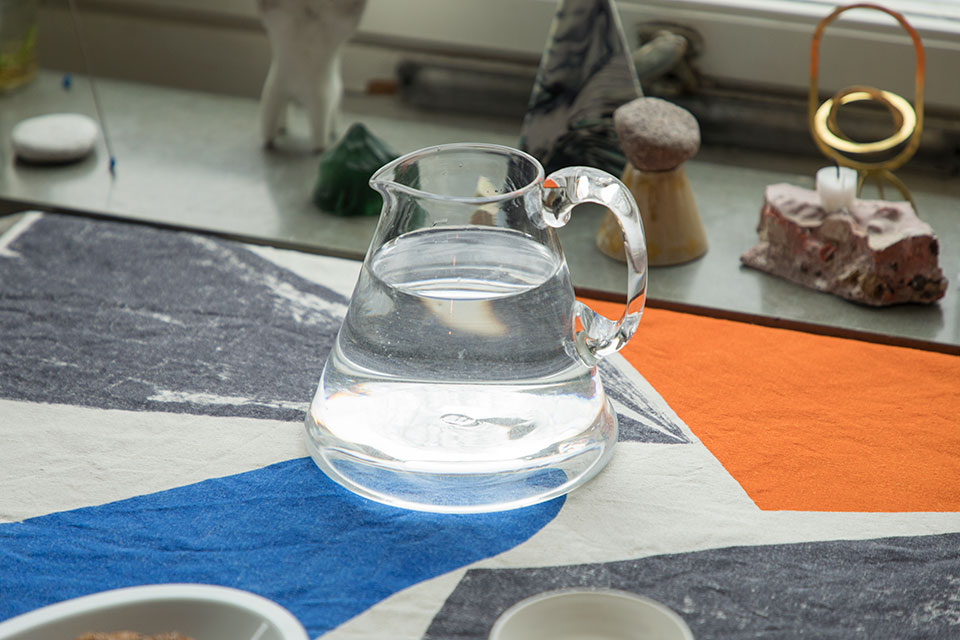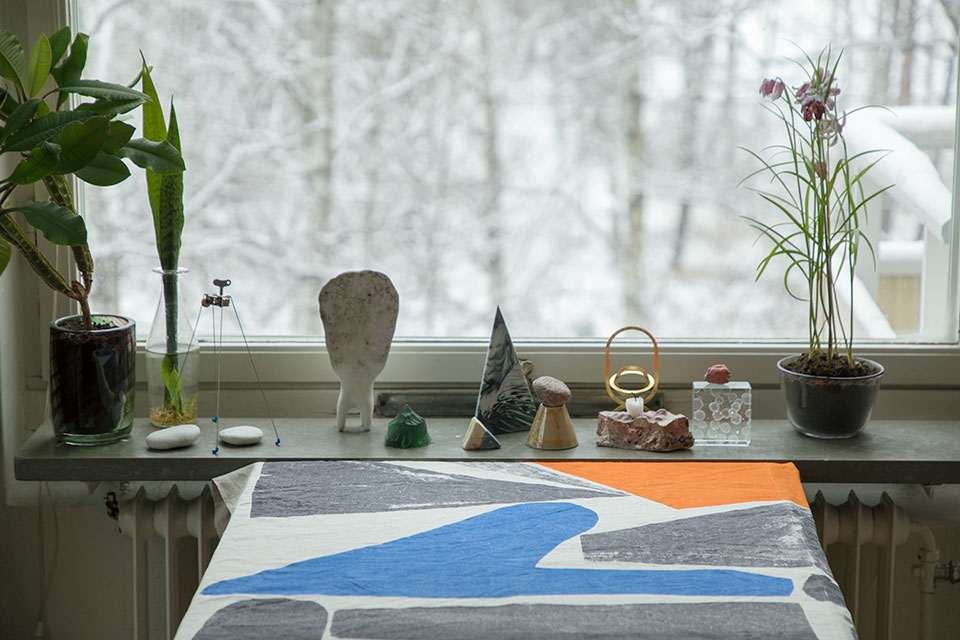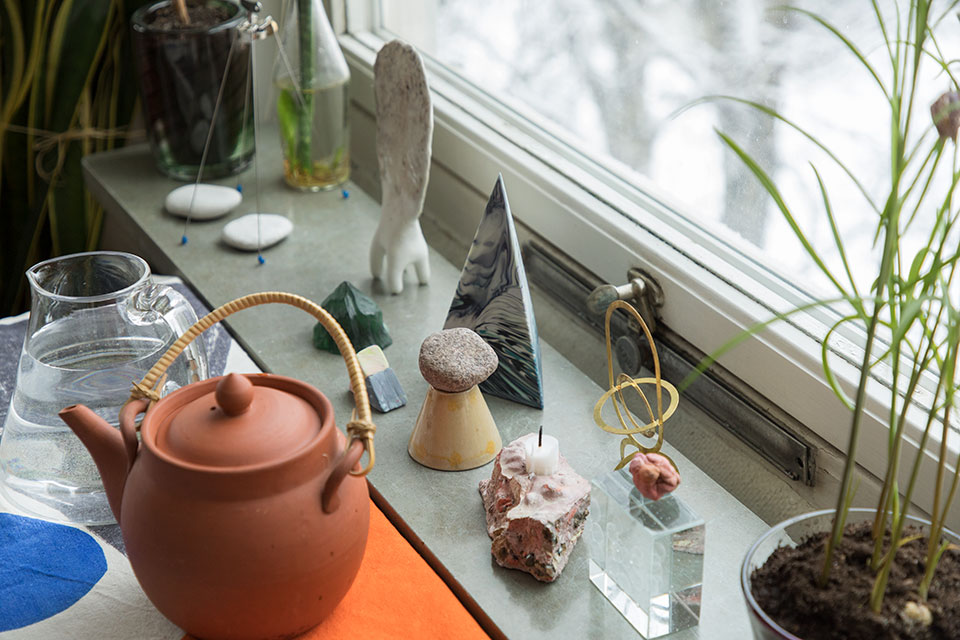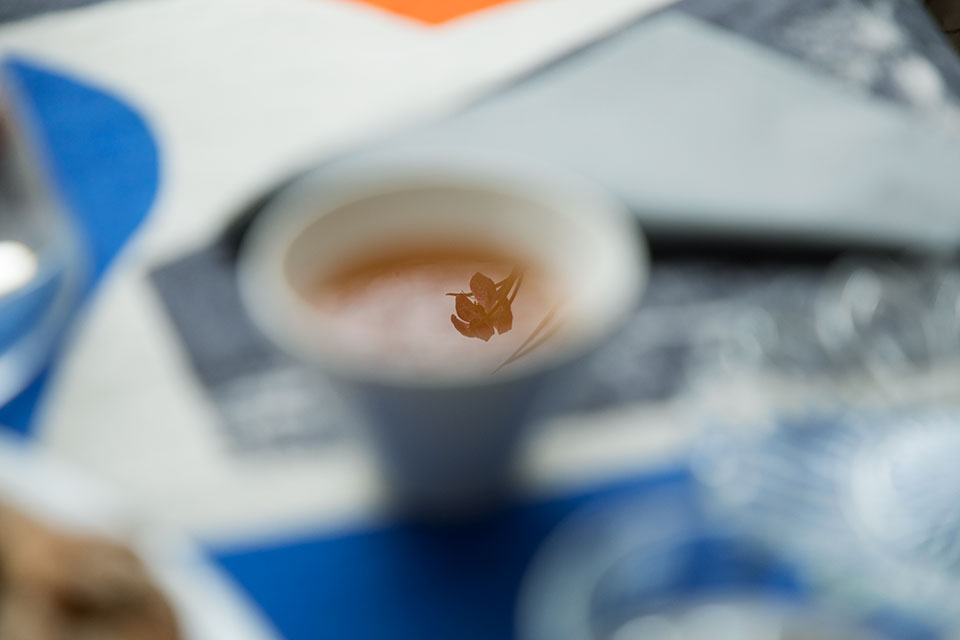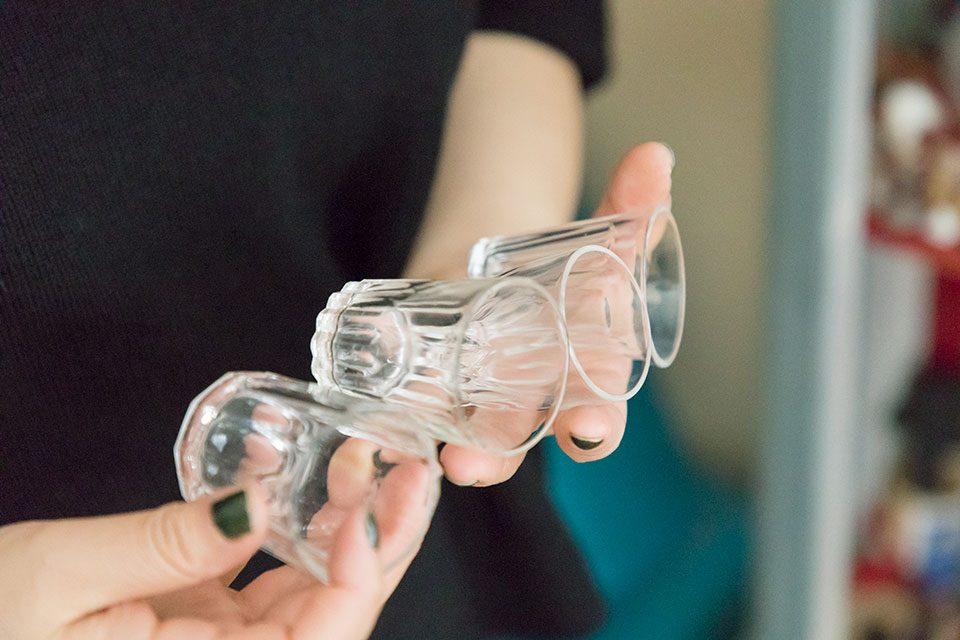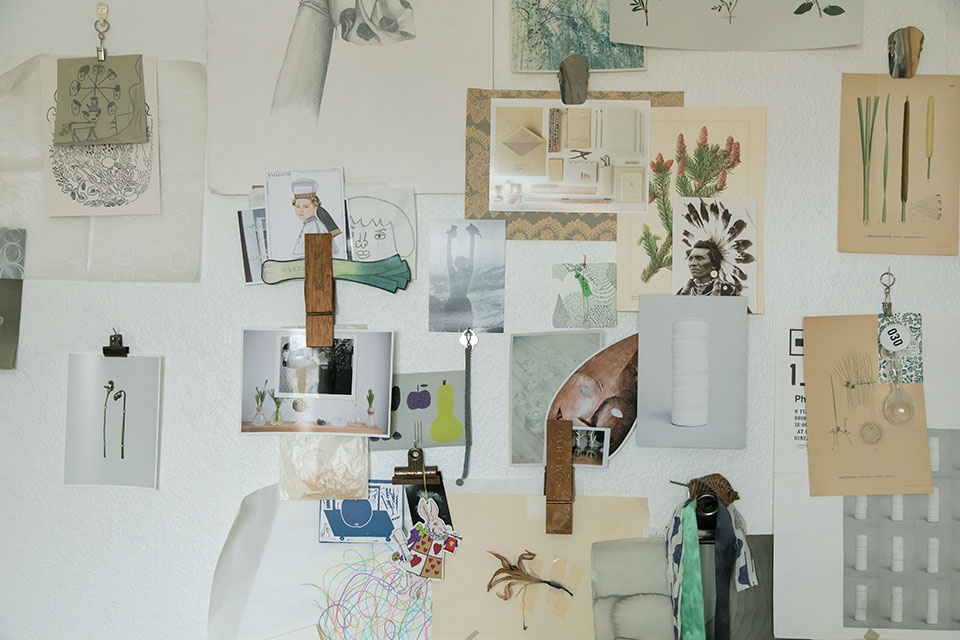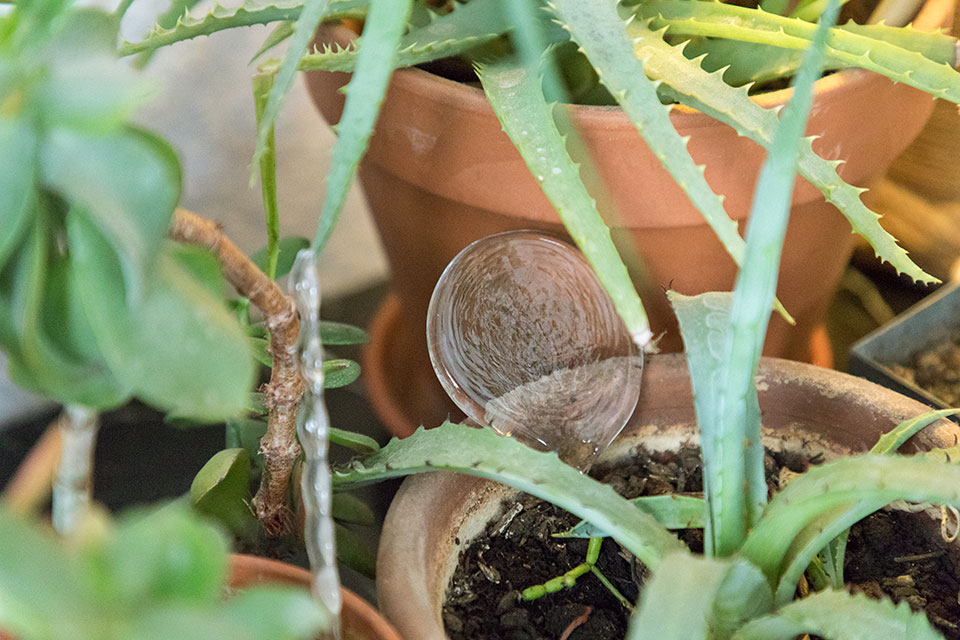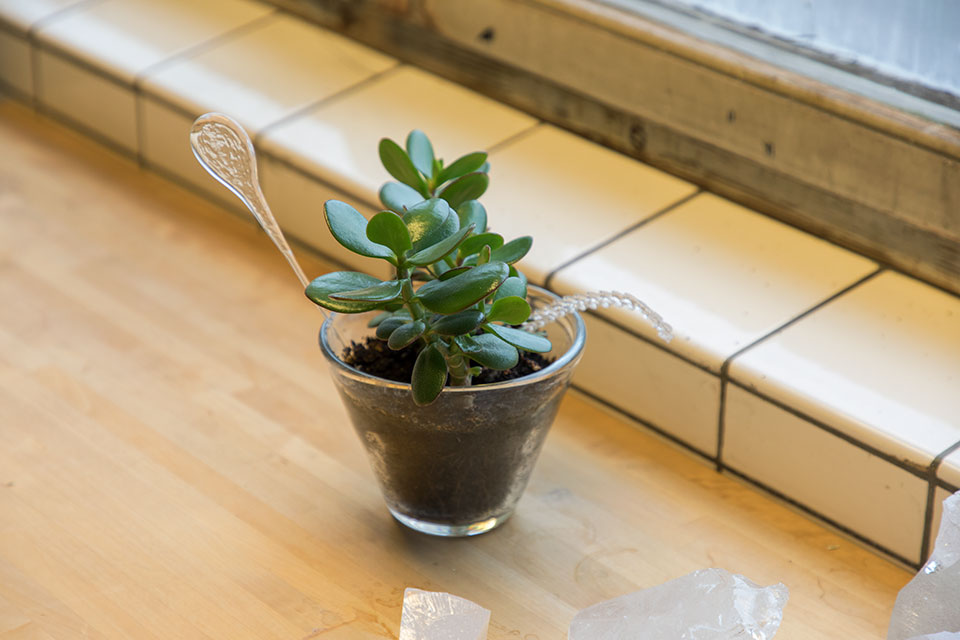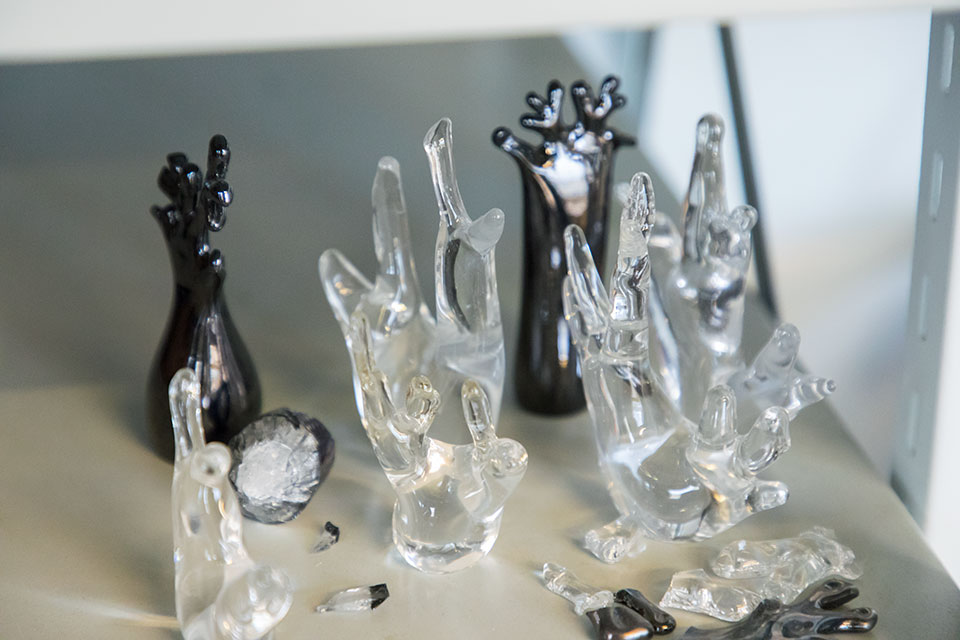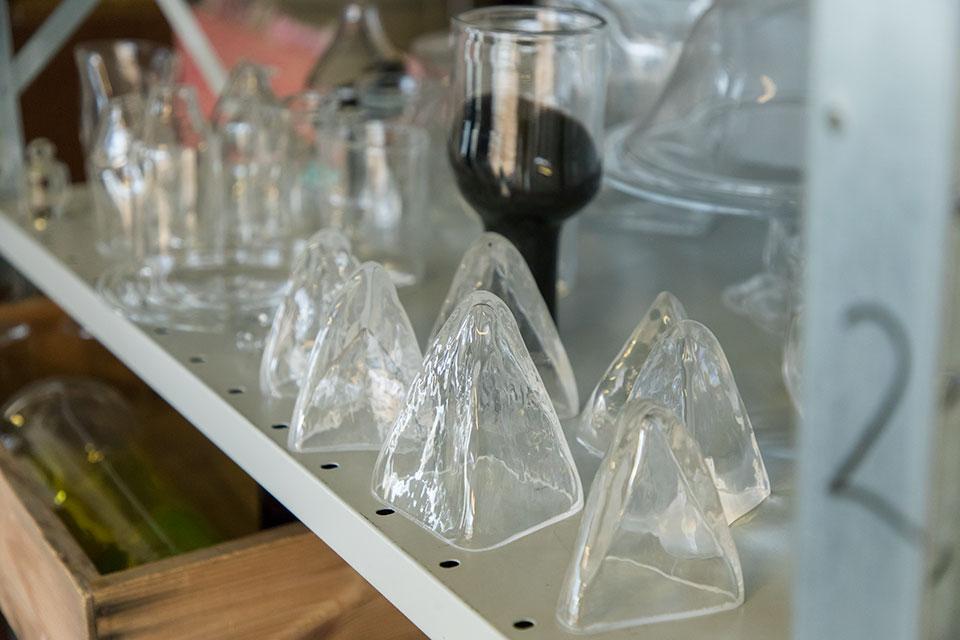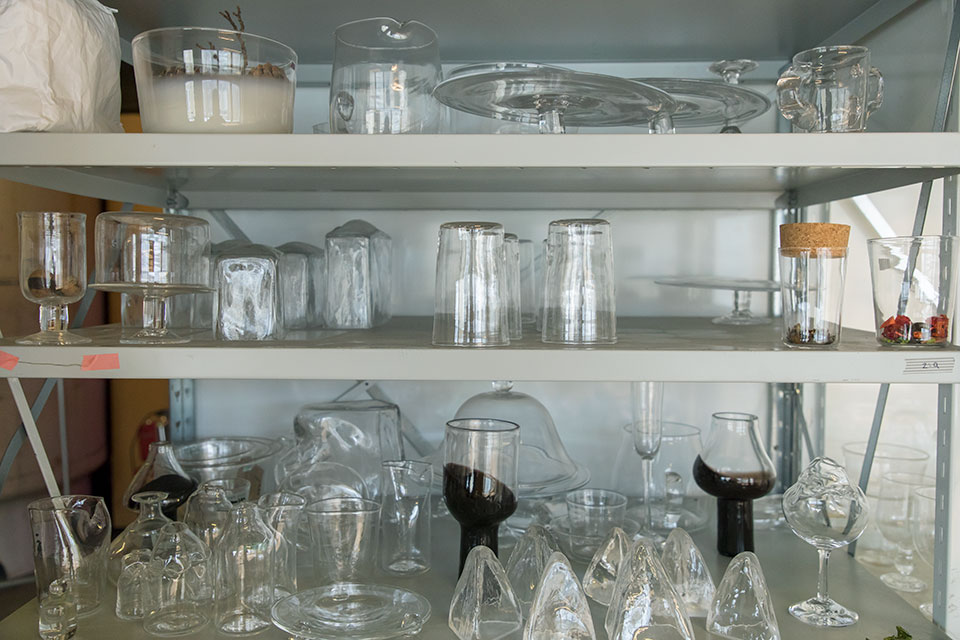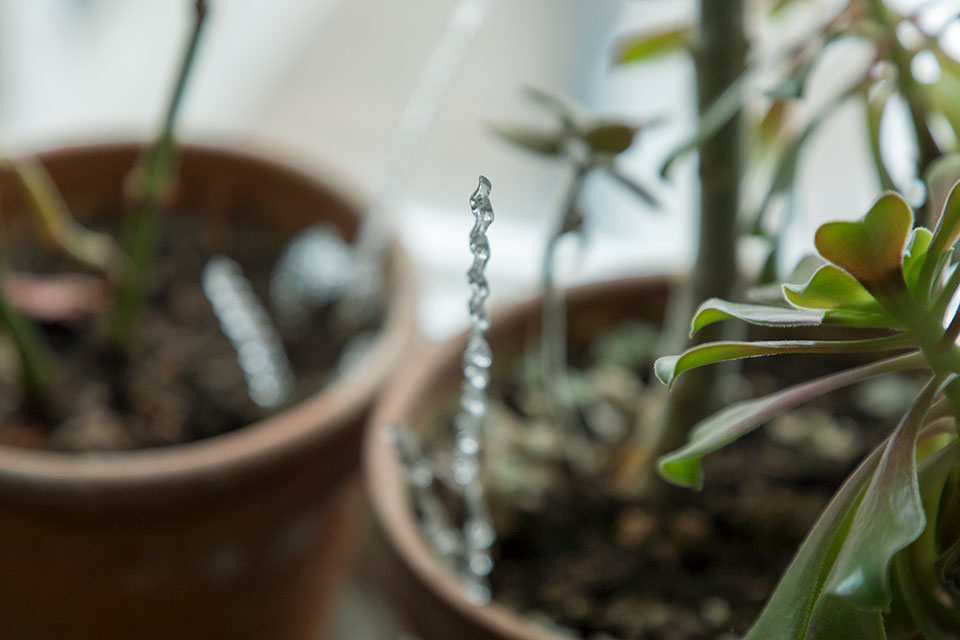采访档案 | Yoko Andersson Yamano
玻璃艺术家 | 瑞典,斯德哥尔摩
作为一名玻璃艺术家,Yoko Andersson Yamano用她熟练的技巧创作了各种各样美丽的作品,从日常使用的酒杯到艺术作品。她曾在瑞典一家久负盛名的玻璃厂接受培训,并在一所艺术学院学习,之后在Ingegerd Raman(瑞典陶器艺术家和玻璃器皿设计师)手下学习。Yamamo拥有精湛的技艺和艺术敏感性,她每天都在为她的创作工作。她说:“让我的作品发挥作用很重要。” 然而,在她看来,这可能并不适用于所有人。她认为只对少数人有效就行了。因为她的作品的功能最终是由用户决定的,所以它可以非常灵活。
As a glass artist, Yoko Andersson Yamano has created various beautiful pieces from a drinking glass for everyday use to artistic work with her proficient skills. She has trained at a long-established glass factory in Sweden and learned at an art college before studying under Ingegerd Råman, a Swedish pottery artist and glassware designer. Having both artisanal skills and artistic sensitivity, Yamamo blows a glass while working on her creation every day. She says “it’s important for my pieces of work to be functional.” According to her, however, the function doesn’t have to work for everyone. She thinks it is fine if it works only for a few individuals. Since the functionality of her piece is determined by its end-user, it can be really flexible.
Yamamo已经在瑞典生活了很多年,目前住在斯德哥尔摩市中心附近的一条住宅区街道上。我们参观了她的住处,她和丈夫、儿子住在那里。
Having been in Sweden for many years, Yamano currently lives in a house located on a residential street near Stockholm’s city center. we visited her place, where she lives with her husband and son.
首先,请告诉我们是什么促使你立志成为一名玻璃艺术家?
First of all, please tell us what motivated you to aim to be a glass artist.
第一件激发我兴趣的事情是:我母亲在我十一或十二岁那年带我去参观了斯堪的纳维亚的一个展览。现在回想起来,我想这些都是瑞典的玻璃工厂制造的,比如KOSTA BODA和orreform s,还有芬兰的工厂。作为一个小女孩,我对它是如何制作感到好奇,并开始寻找许多不同的东西来了解这种工艺。 即使在那个时候,我也倾向于沉浸在手工和材料中,同时提出问题(笑)。我总是想“为什么?”“通过研究,我意识到我想要做批量生产的工艺品,而不是一次性的艺术品。”我想那些手工艺品会给我带来小小的快乐,让我意识到这样一个事实,那就是这种特殊的手柄形状非常适合我。然后我开始寻找学习这种手艺的地方,来到了瑞典。
The very first thing that motivated me was an exhibition on Scandinavia my mother took me to when I was eleven or twelve. I saw some glass work there. Looking back it now, I think those were pieces made at Swedish glass factories such as KOSTA BODA and Orrefors as well as Finnish factories. As a little girl, I then became curious about how it was made and began to look up many different things to know about the craft. Even back then, I tended to get immersed in crafts and materials, while firing questions (laughs). I always thought “why?” Through the research, I realized that I wanted to make mass-produced crafts rather than one-off art pieces. I thought those crafts could bring me small happiness by making me realize things like the fact that this particular handle shape fits me really well. I then started to look for a place to learn such crafts and came to Sweden.
我认为当时关于它的信息很少。你是怎么知道的?
I think there were few information on it around that time. How did you find out?
我12岁的时候就开始找了。在我高中的时候,我听说瑞典有一个地方,我去了大使馆。然后我收集了一些资料。因为这些都是用瑞典语写的,所以我买了一本词典,自己翻译。当时互联网还没有真正普及。经过这样的研究,我发现COSTA BODA和orreform的工厂都有自己的培训学校,在那里学了三年技术的人可以在每个工厂工作。玻璃制作真的很难学,即使你每天花10个小时去吹玻璃,并坚持做一年,你的技能也不会得到很好的提高。如果你继续干三年,你就能成为一名合格的工人。尽管科斯塔博达的工厂当时只招收了六名学生,但他们每天都可以在那里作为一个团队一起吹玻璃。虽然有八十名学生可以入读Orrefors的工厂,但他们被要求轮流担任。因此,每个学生分配的时间有限。 因为我想有更多的时间来吹,我申请了属于COSTA BODA的学校竟奇迹般地获得了录取。
I had been looking for that since I was around twelve. During my high school years, I heard that there was a place in Sweden and visited the embassy. I then collected materials on it. Since those were all written in Swedish, I bought a dictionary and translated it by myself. The Internet was not really available at the time. After researching in that way, I found out that factories called COSTA BODA and Orrefors had their own training schools and people who had learned skills there for three years could work at each factory. Glass-working is really hard to learn and, even if you spend ten hours a day to blow a glass and keep doing it for a year, your skills won’t be so polished. If you continue to do it for three years, you can be a full-fledged worker. Although COSTA BODA’s factory accepted only six students then, they were allowed to blow a glass there every day as a team. Although eighty students could enroll at Orrefors’ factory, they were asked to blow in rotation. So, there was only limited time allotted to each student there. Because I wanted to have more time to blow, I applied for the school belonged to COSTA BODA and miraculously won admission.
哇,真棒!
That’s amazing!
斯堪的纳维亚的玻璃吹制文化起源于瑞典,COSTA BODA是斯堪的纳维亚现存最古老的玻璃器皿工厂。我从一所日本大学毕业后就在这家工厂学习,然后进入斯德哥尔摩的艺术学院Konstfack攻读硕士学位。完成课程后,我加入了一家日本玻璃器皿公司——木村玻璃有限公司。
Scandinavia’s culture of glass-blowing is originated in Sweden and COSTA BODA is the oldest existing glassware factory in Scandinavia. I had studied at the factory after graduated from a Japanese university, and then enrolled at Konstfack, an art college in Stockholm to study MA. After completed the course, I joined a Japanese glassware company, Kimura Glass Co., Ltd.
所以,你回到了日本。这是为什么呢?
So, you returned to Japan. Why was that?
我到那里只有一年半的时间来学习如何制作餐具。我在规划部工作并处理海外项目。当我在工作的时候,公司把我送到一些国家的工厂,在那里我可能一个人去不了。这些感恩的经历造就了现在的我。
I had been there only for one and half year to learn how to make tableware. I worked at the planning division and dealt with overseas projects. While I was working, the company sent me to factories in countries where I might not be able to go by myself. Such grateful experiences definitely make who I am now.
你能给我们举个例子吗?
Can you please give us an example?
我经常和我的朋友讨论瑞典制造的产品的优点。根据我在不同国家的所见所闻,我认为答案是,你可以在瑞典以一种健康的方式创造东西。在我看来,在现代,制造的质量并不会因国家而异。然而,在一些国家,仍然在工业中使用童工,而人们不得不忍受恶劣的工作条件,比如没有窗户的工厂。我确实看到了这样的现实。但在瑞典,你的工作时间是固定的,你可以在夏天休四周的假。所以,我认为购买瑞典制造的产品意味着要理解这些产品是在一个生活水平得到保证的国家生产的。
I often discuss with my friends what is good about Sweden-made products. Drawing from my experiences of having seen many different countries, I think the answer is that you can create things in a healthy way in Sweden. In my opinion, the quality of manufacturing doesn’t really vary across countries in modern days. In some countries, however, child labor is still used in the industry while people have to endure poor working conditions such as a windowless factory. I actually saw such reality. But in Sweden, your working hours are clearly set and you can take a four weeks’ holiday in summer. So, I think buying Sweden-made products means understanding that the products are made in a country where a decent standard of living is guaranteed.
因为你见过各种工作的地方, 所以你现在可以客观地看待你的工作,这不仅与你的技能有关,也与你的工作和生活方式有关。是这样吗?
Because you have seen various working places, you can now see your work objectively as something related not just to your skills, but also to the way you work and live. Is that right?
是的。在瑞典工作后,我现在可以通过社会和政治的视角来看待事物。在此之前,我很少考虑制造业的背景。这段经历给了我一个很好的教训。
Yeah. After started working in Sweden, I can now look at things through social and political lenses. Before then, I seldom give consideration to the background of manufacturing, I guess. The experience taught me a good lesson.
你觉得什么对你的创作过程很重要?
What do you find important for your creative process?
“功能性”真的很重要。没有功能的东西很难做。我甚至认为这不属于我的领域。 如果产品具有功能,则会产生限制。重要的是要能够看到有这样一个限制的产品需要什么。当我在乌得勒支举办展览时,我们决定做一个书摊。为了得到一个想法,我开始整理我自己的书架,然后找到了一些东西,像纸质的便签,门票和别人在书中间发给我的信。似乎我把那些习惯放在那里,以防止那些被风吹走(笑)。 然后我想到了一个能够存储这些东西的想法。 我之后制作的并不是书架,而是可以放在书本之间的玻璃盒子。 即使在这种情况下,产品也应具有功能性。如果这个功能只适用于少数人,或者只要产品本身具有某种功能,人们就会以不同的方式使用它,我仍然感到满意。
“Functionality” is really important. It’s hard to make things without function. I even think that it’s out of my field. If a product has functionality, it puts a restriction. It is important to be able to see what is necessary for the product with such a restriction. When I held an exhibition at Utrecht, we decided to make a book stand. To get an idea, I started to organize my own bookshelf and then found things like paper notes, tickets and letters someone sent to me between books. It seemed like I put those there by habit to prevent those from being blown away by wind (laughs). Then an idea to make something I can store those things came up to my mind. What I made after that was not really a book stand, but a glass box that can be placed between books. Even in that case, the product should be functional. I’m still satisfied if the function works only for a few people or people utilize it in a different way as long as the product itself has a function.
你希望它有用,不管人们以哪种方式使用,对吗?
You want it useful in whichever way people use it, do you?
是的。然而,最近我开始认为我的工作不需要100%的功能性, 20%的功能性和80%的非功能性。我现在正在考虑做一些看起来和将来一样漂亮的东西。
Yes. However, I recently start to think that my work doesn’t have to be 100% functional, but 20% functional and 80% non-functional. I’m now considering about making things that look beautiful just as those are in the future.
现在,可以告诉我们一些关于你现在的家。
Now, please tell us about your current home.
我们住在一个建于20世纪50年代的多户家庭公寓里。在瑞典,有很多这样的老建筑,因为我们这里很少发生地震。我在这里住了十多年。 虽然我曾经搬出去,但是我把它租给了我的朋友然后又回来了……在瑞典,人们对与权利有关的事情非常严格。幸运的是,我可以直接从它的主人那里租房子,因为我有第一份合同。 否则,搬出后很难再租赁同一栋房子。这些地区现在特别受欢迎,因为一些艺术家的迁入。
We are living in a multi-family unit built in the 1950s. In Sweden, there are many old buildings like this because we seldom have earthquakes here. I have lived here for over ten years. Although I have once moved out, I leased it to my friend and then came back later… Here in Sweden, people are really strict on things related to rights. Fortunately, I can rent this house directly from its owner because I’ve got the first contract. Otherwise, it’s really difficult to re-lease the same house after you move out. This area becomes especially popular these days as some artists have moved in.
这个家对于你来说有什么特别的存在吗?
Is there anything you have sentimental value for in this house?
我放在墙上的大部分东西都对我有特殊的意义。我哥哥在日本的摄影师拍摄的照片,他对日本摇滚乐队的描述,我祖母狗的照片,与朋友一起旅游的纪念品……那些不是艺术品整齐地挂在墙上,而是纪念品 我的家人,朋友和个人活动。就像在墙上涂鸦一样。
Most of the things I put on the wall have special meanings to me. The photos taken by my brother who works as a photographer in Japan, his illustration of a Japanese rock band, a photo of my grandmother’s dog, memorabilia from travels with my friends… Those are not art pieces neatly hung on the wall, but are mementoes of my family, friends and personal events. It’s like doodling across the wall.
玻璃架看起来非常好。 里面是什么?
The glass shelf looks really nice. What’s in it?
因为我喜欢收集玻璃器皿,我有很多的。过去工厂生产的颜色各不相同,现在大部分都停产了。这种切割玻璃是在德国制造的。还有我的第一个样品,我儿子第一次送给我的非洲菊雏菊的一些部分,我在工作室外找到的一个苹果树棒,一个可能已经停产的白色药瓶,瑞典橡子,一块我在海滩上发现的玻璃,我儿子制作的第一块陶瓷,以及我朋友和家人的礼物……这些东西对别人来说可能毫无意义,但对我来说却有很多回忆。我也从中得到了灵感。
Because I love collecting pressed glassware, I have many of those. The colors of those made at factories in the old days differ from piece to piece and most of those are out of production now. This cut-glass is made in Germany. There are also my first samples, some parts of a gerbera daisy my son gave me for the first time, an apple tree stick I found outside of my studio, a white medicine bottle that may have been ceased in production, Swedish acorns, pieces of glass I found on a beach, the first ceramic my son has ever made, and gifts from my friends and family… Those things probably mean nothing to other people but hold a lot of memories for me. I get inspirations from those, too.
你如何获得灵感开始你的创作过程?
How do you get inspired to start your creative process?
虽然我确实从我提到的“事物”中获得灵感,但我更多的是从“行为”中获得灵感。人们的行为。例如,当我把一朵花带到我朋友的展览中时,我看到他们使用了一个空酒瓶,他们在冲洗后用了一天作为花瓶。然后我想;“哦,是的,我们可以用酒瓶做花瓶”,并有了一个想法。 我可能会想出一个看起来像酒瓶的花瓶。同样的,别人所做的事情也会激励我,让我产生一种产品的想法,让我觉得身边的产品很有趣。我目前正在一家餐馆工作,并注意到苹果的味道每年都在变化,即使是那些来自同一棵树并用于同一食谱的苹果。因为他们说“今年的苹果很甜,所以我们想少量提供果汁。 要做到这一点,我们需要小杯子,”我为他们制作了一副小玻璃杯。另一方面,第二年的苹果非常酸,他们说,“我们想用果汁,冰块和苏打水制作酸鸡尾酒。 所以,请制作更大的玻璃杯。”当提供这样的特定订单时,我总是从中收取费用。
Although I do get inspired from “things” as I mentioned, I more often get inspirations from “behaviors.” People’s behaviors. When I brought a flower to my friend’s exhibition, for example, I saw that they used an empty wine bottle they have finished a day before as a flower vase after rinsing it. Then I thought like; “Oh yes, we can use a wine bottle as a vase” and got an idea. I might make a flower vase that looks like a wine bottle with the idea. Likewise, what someone does inspires me and makes me conceive an idea of a product that would be fun to have around. I’m currently working with a restaurant and noticed that the taste of apples changes every year even those are derived from the same tree and used for the same recipe. Because they said “This year’s apples are very sweet, so we’d like to serve the juice in small amounts. To do so, we need small glasses,” I made shot glasses for them. On the other hand, the following year’s apples were so sour and they said, “we’d like to make a sour cocktail with the juice, ice cubes and soda. So, please make bigger glasses.” When being offered such specific orders, I always get a charge from it.
你的工作风格就像一个设计大批量生产产品的产品设计师。但实际上,这些都是手工制作的。所以,你也是一个制作一次性艺术品的艺术家。
Your working style is like a product designer who design mass-produced items. But actually, you make all of those by hand. So, you are also an artist who makes one-off art pieces.
在早年,我不太确定我是想制作艺术品还是制作手工艺品或设计品。但我突然意识到我喜欢有很多近乎重复的东西。 不是“重复的东西”,而是“接近重复的东西。”我想这就像万花筒模式。我想这就像万花筒一样。虽然每一个图案看起来都很漂亮,但是旋转万花筒的时候,你可能会卡在一个特定的图案上,想“这个图案看起来真的很漂亮!”这就是你喜欢的模式。每个模式都是不同的,即使所有这些看起来都很相似。虽然我从自己的生活方式中获得灵感,但如果我的工作也能融入别人的生活,那就太好了。我想继续做东西,利用我的创作风格的优势,包括一次性的艺术品。
In early life, I was not quite sure whether I wanted to make art or make handicrafts or design. But I suddenly realized that I love having a lot of near duplicate things. Not “duplicate things” but “near duplicate things.” It’s like kaleidoscope patterns, I guess. Although each of those patterns looks beautiful, as rotating a kaleidoscope, you may get stuck on a particular pattern, thinking “this pattern looks really nice!” That’s the pattern you love. Every pattern is different even all of those look similar. Although I get inspired through my own lifestyle, it would be nice if my work fits also into other people’s lives. I would like to keep making things, using the advantage of my style of creation that includes one-off art pieces.
Yoko Andersson Yamano
Yamano出生于1978年,在瑞典国立工艺美术大学Konstfack完成了硕士课程。2001年,她开始在一位瑞典陶器艺术家和玻璃器皿设计师Ingegerd Raman手下学习。她目前在瑞典,并在世界各地举办展览,主要是在欧洲国家和日本。2011年,她获得了斯德哥尔摩的文化奖。自2014年以来,她的作品一直在瑞典议会大厦展出。她在2018年6月举办了一个名为Babaghuri Kiyosumi Store和Babaghuri Isetan Shinjuku Store的展览。
版权归属
Interview © Chizuru Atsuta
Photos © Norio Kidera

